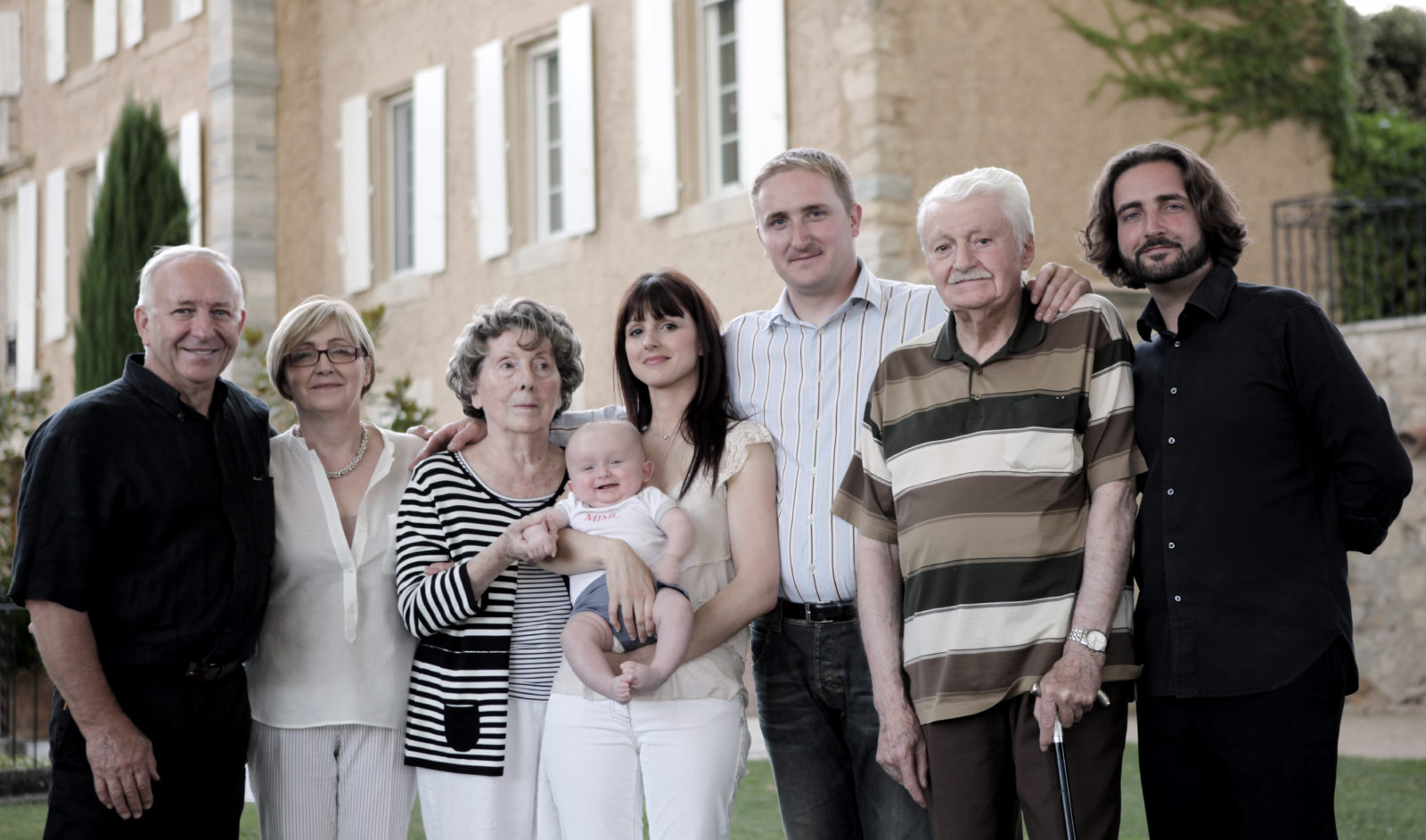

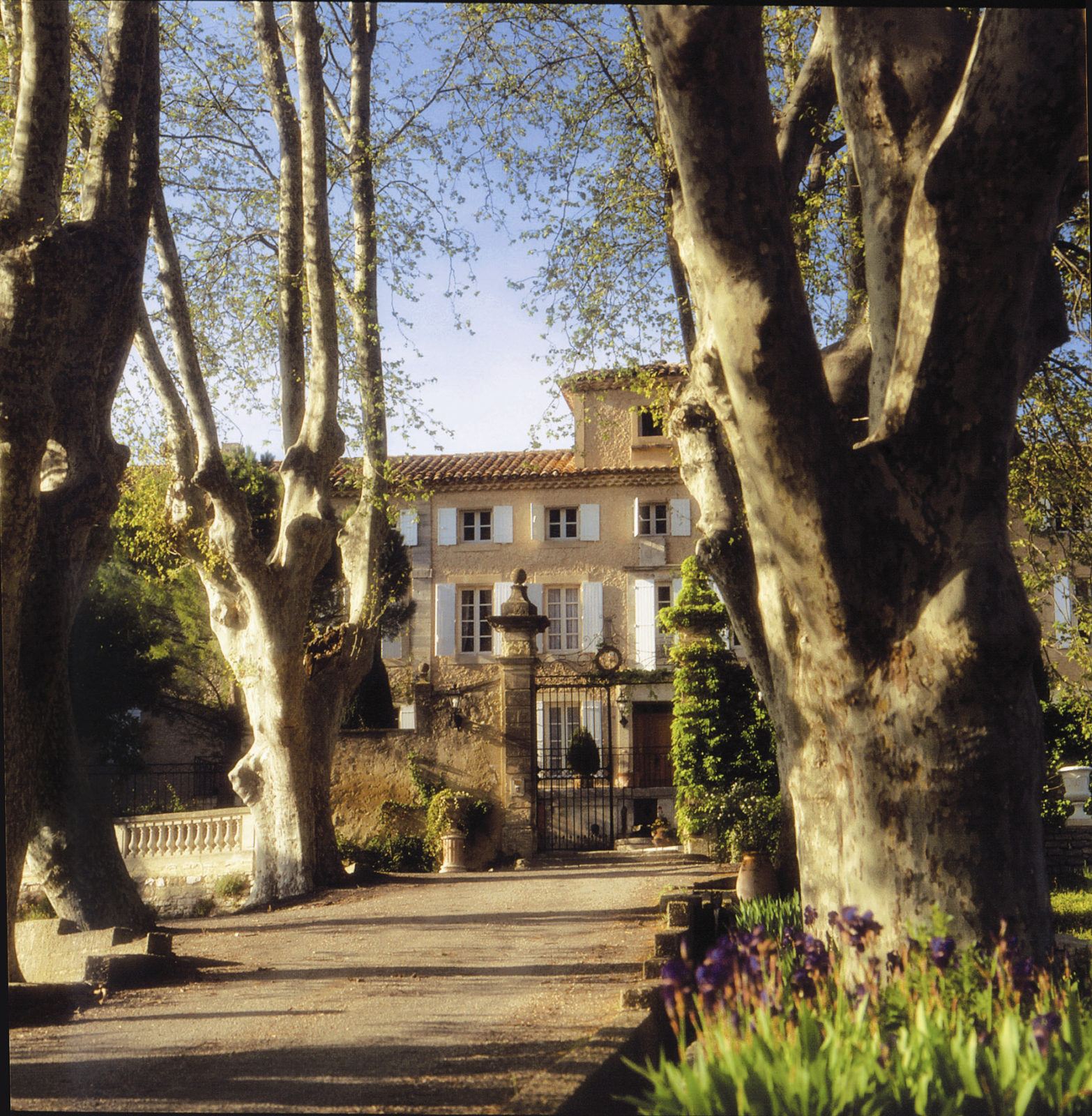
Le Chatêau Pesquié
What is the history of your family in the Ventoux?
My mother’s parents purchased Château Pesquié in 1971, two years before the AOC Ventoux was created. So in a way, the history of my family and development of the appellation have been parallel. My grandparents came from Orange – basically half an hour away. When they arrived they had a few rows of vines but didn’t come from a winemaking background. My paternal grandfather and his ancestors had managed vineyards in Algeria. When my grandfather came back to France in the early 1960s he managed properties in the Rhône before ending his career teaching winemaking at the Lycée Viticole d’Orange. So there was a great combination of passion about wine from both sides with the financial power to buy a vineyard on my mother’s side and quite a bit of winemaking knowledge on my father’s side.
Both my parents began their careers in the medical field. My mother was a speech therapist and my father was a physical therapist but they took over Château Pesquié in the mid-1980s. They both trained as sommeliers and started doing micro-vinifications from our terroirs before deciding to leave the Cooperative, where they were selling our grape production, and creating the winery in 1990 – basically when Eric started European Cellars. Our growth and development as a winery, and not just a wine estate, has been parallel to the growth and development of European Cellars.
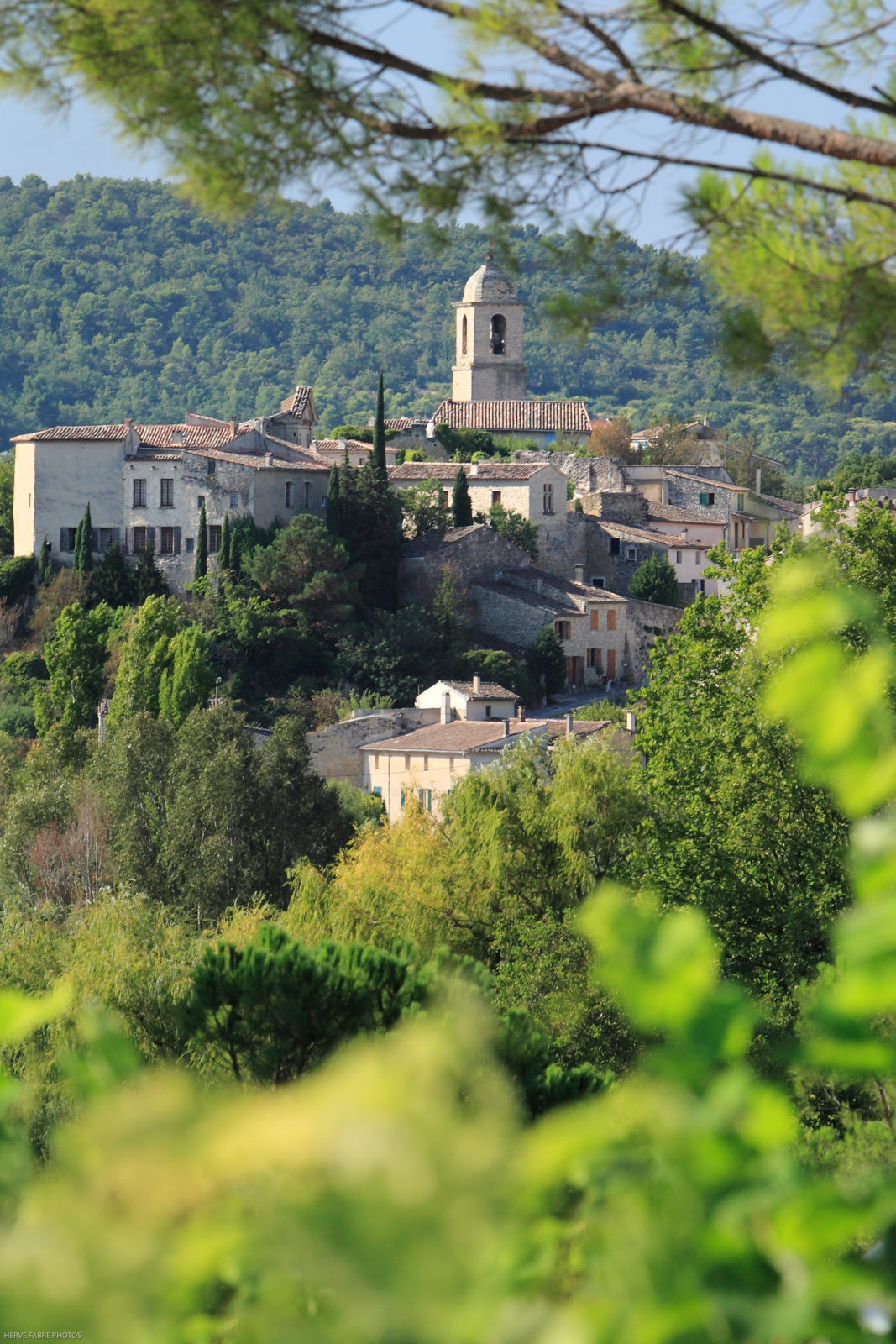
The beautiful hilltop village of Mormoiron
What drew your mother’s parents to the Ventoux? Was it their intention to become grape growers?
They thought the area was a beautiful place to settle and retire. Their ambition wasn’t so much to be winemakers but grape growers. At the same time, they became very involved in the life of the local Cooperative.
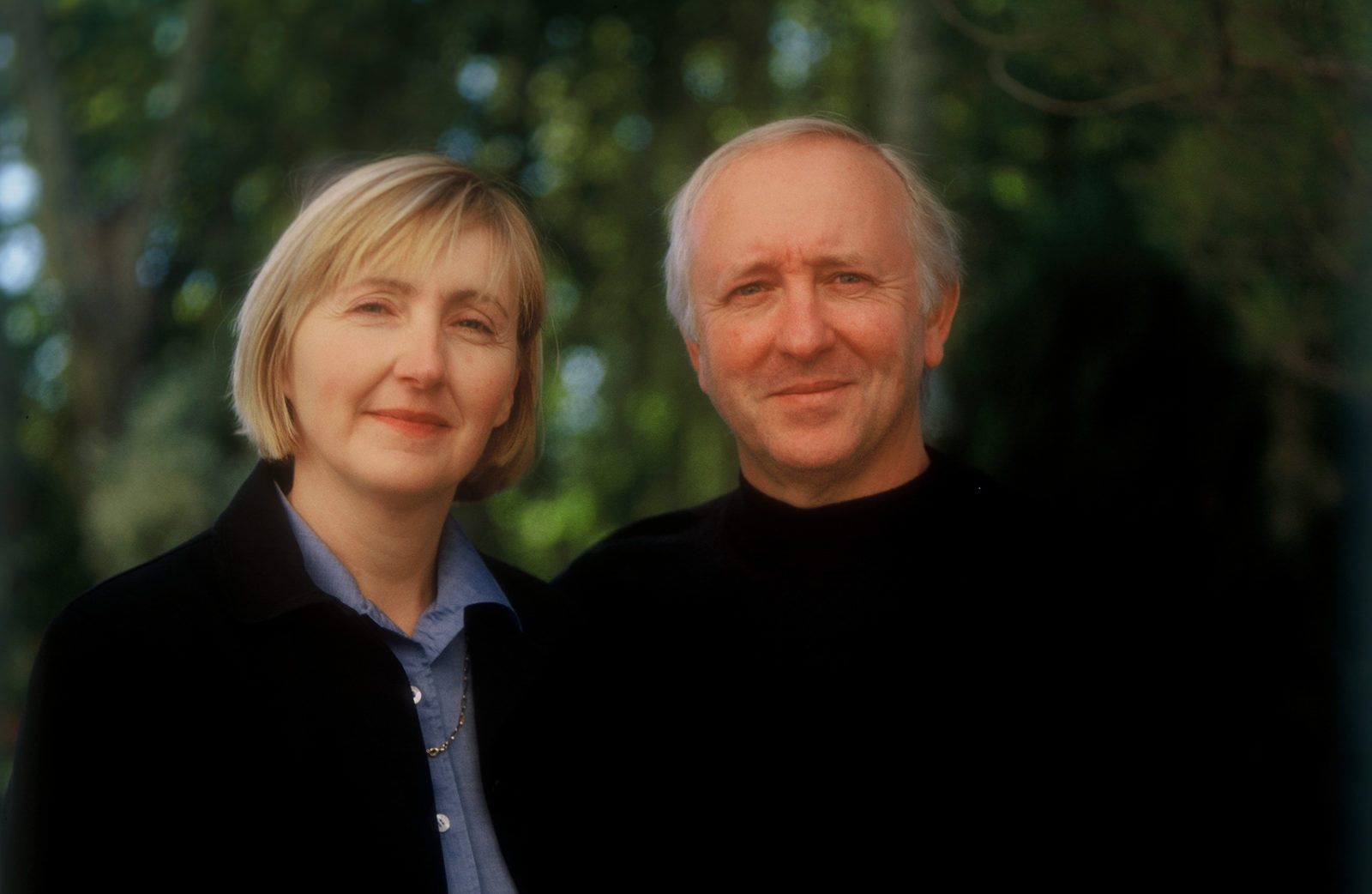
Edith and Paul Chaudière
When did your parents return to the estate?
In 1985. At first, they were grape growers and took time to become more familiar with winemaking while training as sommeliers, traveling, learning from other winemakers, and understanding other wine regions. While they’ve never told me this, it’s my impression that they learned a lot from several trips to California. They were so impressed with what was being achieved there that they felt very confident that they could become the new world in the old. It was a big bet but they had a very strong belief. Together with my brother Alex, we’ve probably taken Pesquié to the next level but it was their crazy dream that really started Château Pesquié. It took a lot of investment and faith to create the estate as there were really no interesting Ventoux wines to taste at that time.
There’s a story my father likes to tell. In 1990, his first vintage, which was really a great vintage to start with, he bought about 25 barrels, and his enologist asked, “Why did you buy barrels? We’re in the Ventoux.” Then six months later, after seeing the evolution of the wine in barrel, his enologist said he should buy a lot more. Everybody from the grape grower to the consumer had to be convinced that it was possible to make something other than a light-style Côtes-du-Rhône in the Ventoux.
What exactly was the state of the AOC Ventoux in 1990?
There were maybe a handful of independent wineries but they were very small and not particularly interesting. Most of the estates, that have established a name for themselves in the Ventoux, were founded 5 to 15 years after 1990. So when my parents launched the winery we were clearly among the first and by far the largest and most ambitious. It was mostly Cooperatives, about 15, and production was based on the maximum yields allowed – resulting in simple, easy-drinking, lighter-styled wines.
It’s difficult to redefine an appellation when its reputation is largely based on bulk wine. How long did it take for consumers to understand that the Ventoux was capable of something greater?
We were extremely lucky to have 1990 as our first vintage. The 1990 Quintessence is just starting to fade at 26 years old, but it still shows beautifully and many people were surprised by our first vintage. That said, it was a really long process to raise a much larger awareness of the potential of the Ventoux and today we’re still struggling to make the consumers aware of our potential. I would say that after about 2000, we’ve seen more markets and consumers acknowledging that you could still find inexpensive wines in the Ventoux, but that there was also something interesting happening with the terroir – allowing for great value in terroir-based wines that show balance, acidity and concentration, and that stood out as unique in in the Rhône Valley. This is still a relatively new awareness.
Do you find it easier to export your wines than to sell them in France given the historical reputation of Ventoux?
There is definitely a very conservative way of viewing French wines in France. For a long time this was really a barrier for new AOCs and upcoming terroirs like the Ventoux. The reality is that most consumers in France, like most markets, do not know much about wine so they take refuge in what their parents used to drink – which is red Bordeaux, Chablis, Sancerre and maybe some white Burgundy. This was largely the case in the 1990s and the early 2000s. With the millennials its clear the potential for the recognition of the Ventoux, as a place for higher-end wines, has become much easier. Now 80% of our sales are made outside of France but we’ve seen nearly 20-25% growth in the domestic market over the last three years and I’m confident this will be the case for the next 5-10 years.
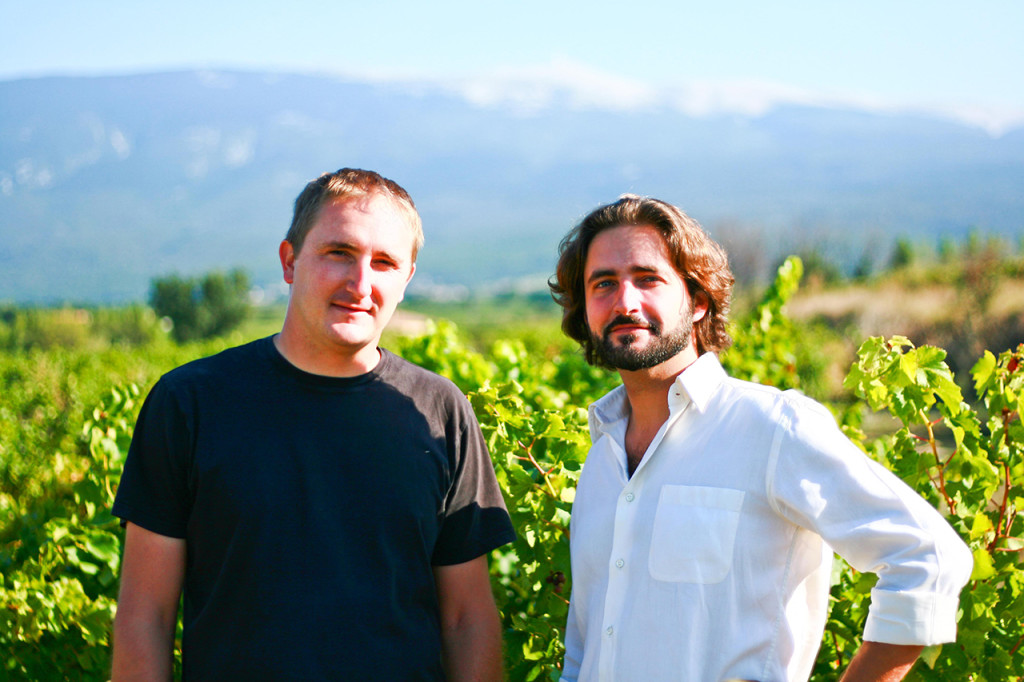
Alex and Fred Chaudière
When did you and your brother Alex get started at the estate?
It’s been a gradual process. I first came back around 2002 and 2003 which were both really interesting vintages… so I quickly realized that this wasn’t going to be an easy job and that vintages matter. But sales-wise I started selling 2000 and 2001, then I had to sell the 02s and 03s. At that time my father was still making the wines and my mother was helping me with the management and sales. My brother rejoined us in 2006. The 2007 was really the first vintage where I can say that we did the wines together – of course asking a lot of advise from our father but with him being much less involved in the process. So there was a gradual 5-year transition. The truth is our parents haven’t really been too far as they live only about 300m from the winery! But year after year we’ve been becoming more independent.
Have there been any changes or an evolution from one generation to the next?
We share the same ambitions but I think we’re taking our parents’ dream to another level. Alex and I have travelled more, met more winemakers and tasted more wines, so coming back we decided to move from sustainable to organic quite quickly, and now we are moving from organic to biodynamic. Most of our investment has been in the vineyards where we’ve replanted plots that we felt there weren’t the right clone or variety and we’ve restructured the trellising of most of our whites and Syrah and some of the Grenache. In the cellar we’ve gradually given a little more space to concrete tanks and we’ve gradually changed the selection of our barrels… But overall there hasn’t been a revolution; rather we’ve gone further in trying to make precise changes in every step of the process while working more harmoniously with the environment. All of this is quite coherent with what my parents had started.
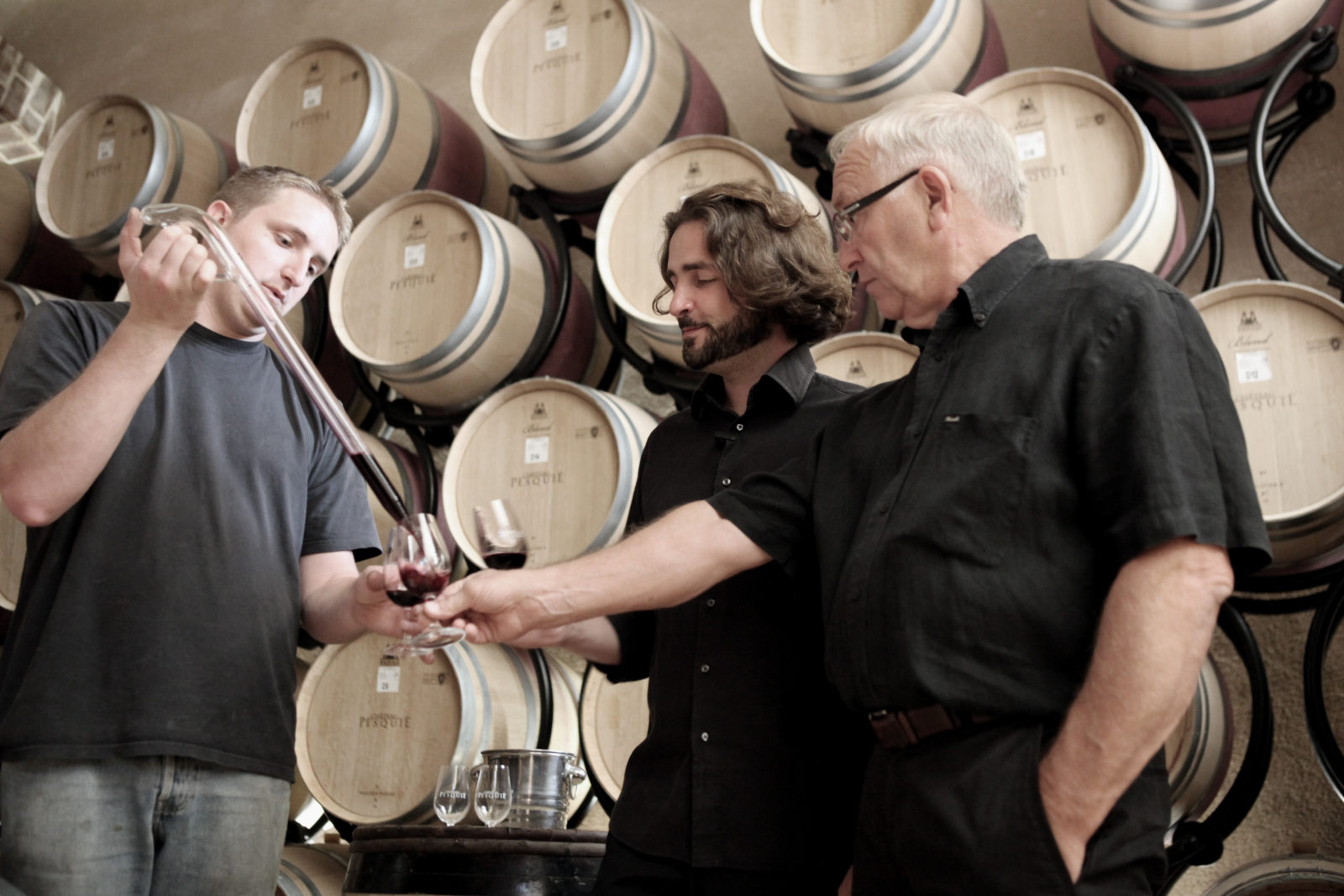
Alex, Fred and Paul Chaudière
Where are you in the process of conversion to biodynamics?
We started with 20% last year (2015) and the target is 40% this year. We are hoping to start official conversion with Biodyvin or Demeter in 2017.
Biodynamic farming is labor intensive, how difficult is it to convert a larger estate?
It is, but I think people too often focus on the esoteric side of biodynamic farming, but this is not really what drove us to this decision. It was from tasting great wines from other growers we know who are practicing biodynamics. The way we see it and the way we try to organize it, is it’s a tool for precision. It’s about being much more aware of the needs of the plants and it’s about spending more time in the vineyard and being able to strike exactly at the right time with the right elements. There’s a little bit of material to buy and some infrastructure to build like capturing rainwater, and a wide range of technical details that can be painful to the organization but it really allows us to be in the vineyards and intervening just when it is needed.
Have you noticed any changes to the vines or wines so far?
It very early but so far what we’ve found is the soils have become slightly darker, with a stronger smell. It is quite easy to see this since we’ve have some vineyards where we’ve started biodynamic farming, next to vines that are organic and vines that are sustainably farmed so it is easy to compare them. We also have seen a much denser root system with the biodynamic vines. These are the first changes we’ve observed but it’s only been a year since we started and we know it’s going to be a long process. We a hoping to see an impact on the wines in 1 or 2 years but I think it will take at least 5 years to measure accurately what we’ve been able to achieve.
You currently have three major terroirs you work in the Ventoux, is that correct?
Yes, there are 3 main components that can be, more or less pure forms, and that often combine in many vineyards. The main terroir, and the majority, is limestone. Next we have a lot of clay, different kinds of clay from grey to orange and red – the later, richer in iron oxides. We also have a little bit of sand. This is probably less than 5% on the estate but it’s quite interesting for rosés and to bring a little bit of elegance to the reds.
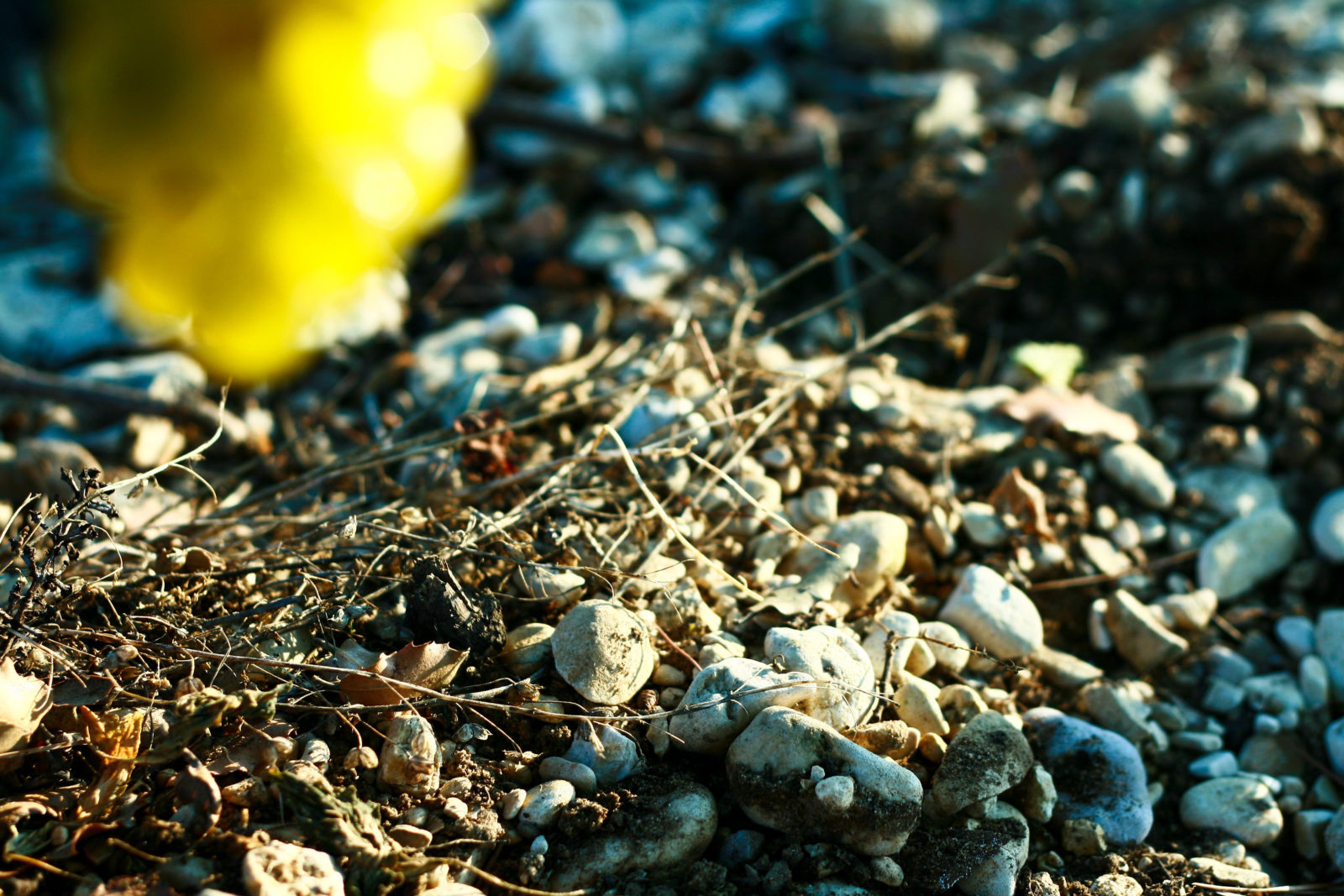
Gravelly clay-limestone terroir
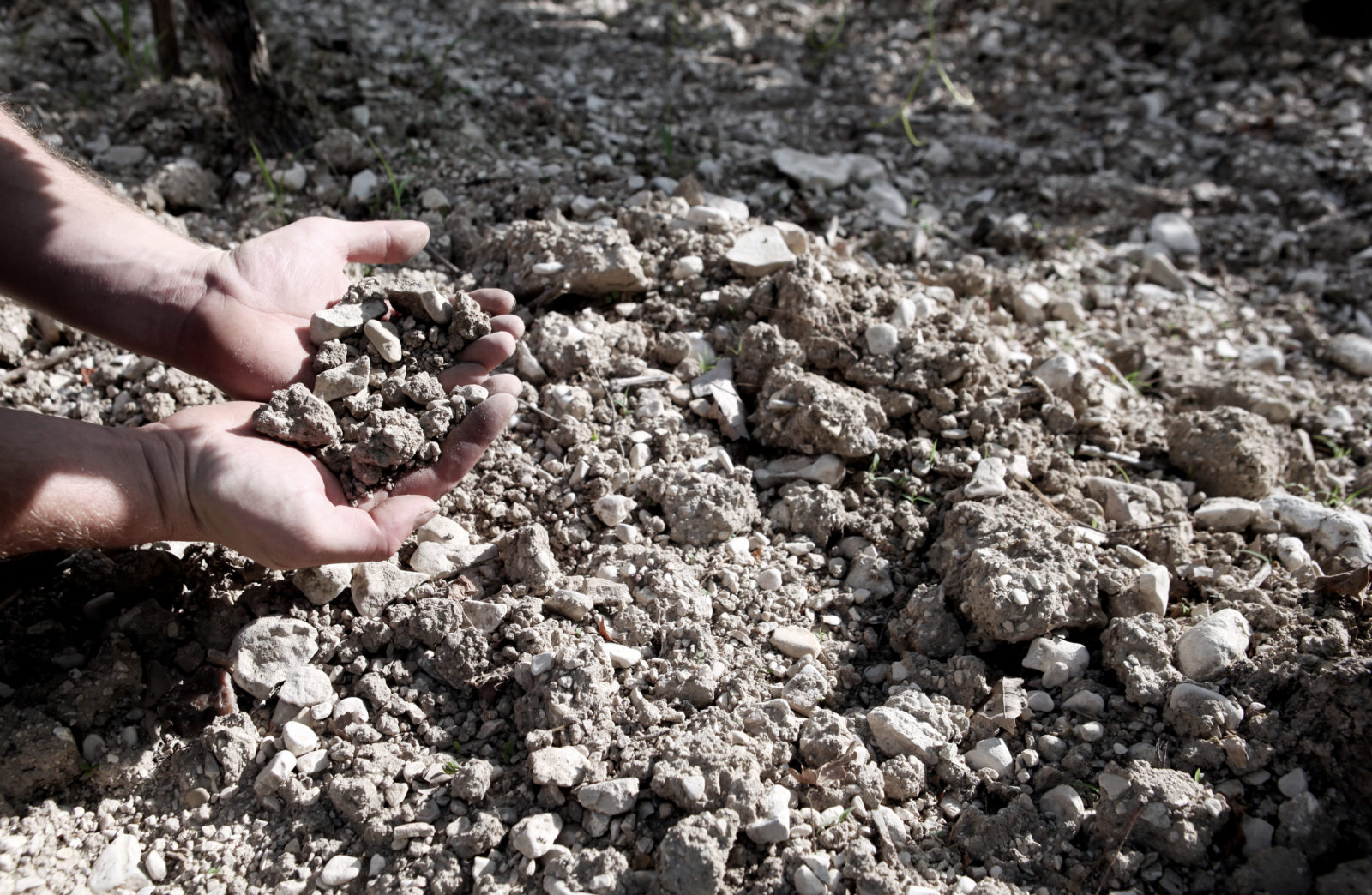
Grey clay-imstone
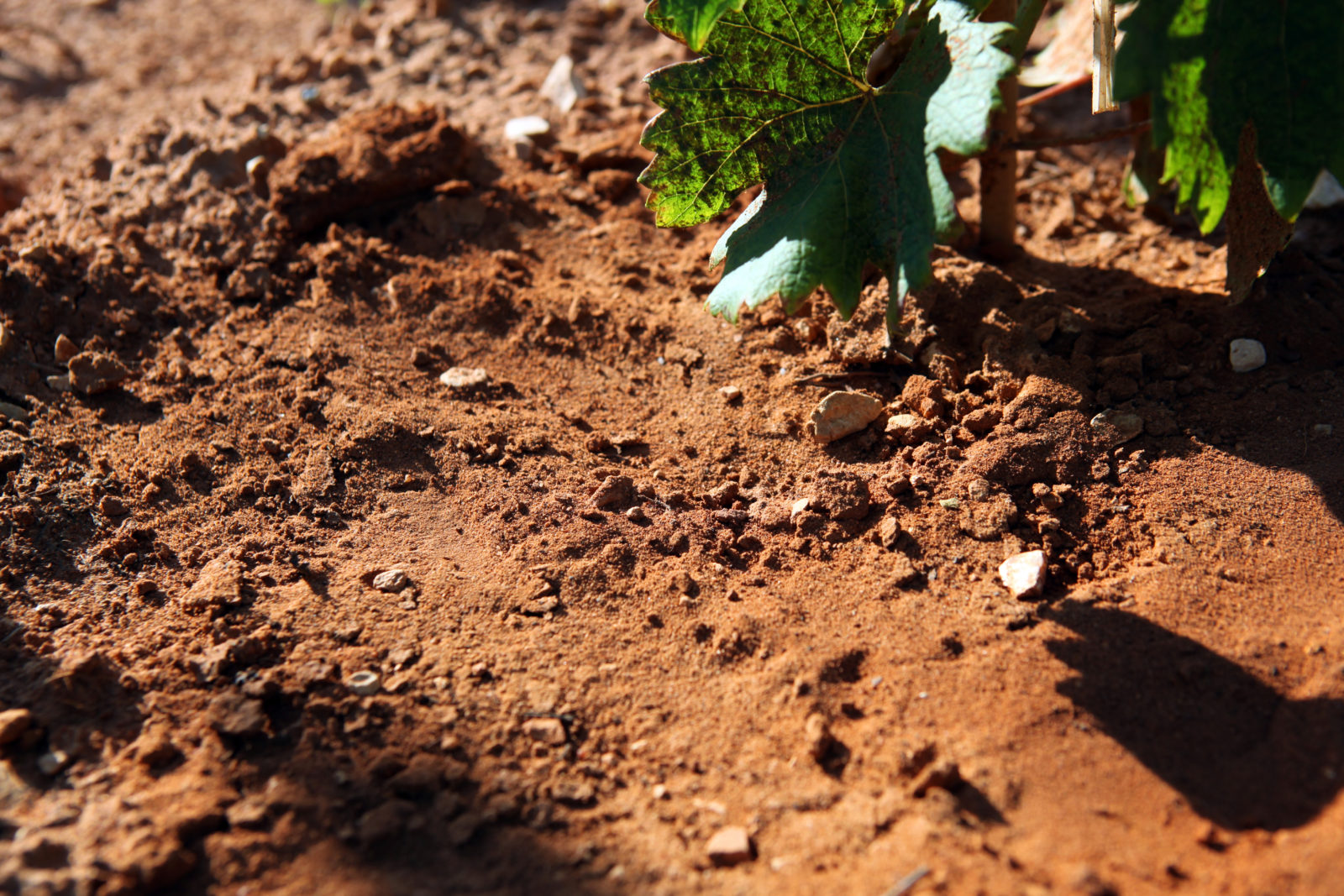
Red clay, rich with iron oxide
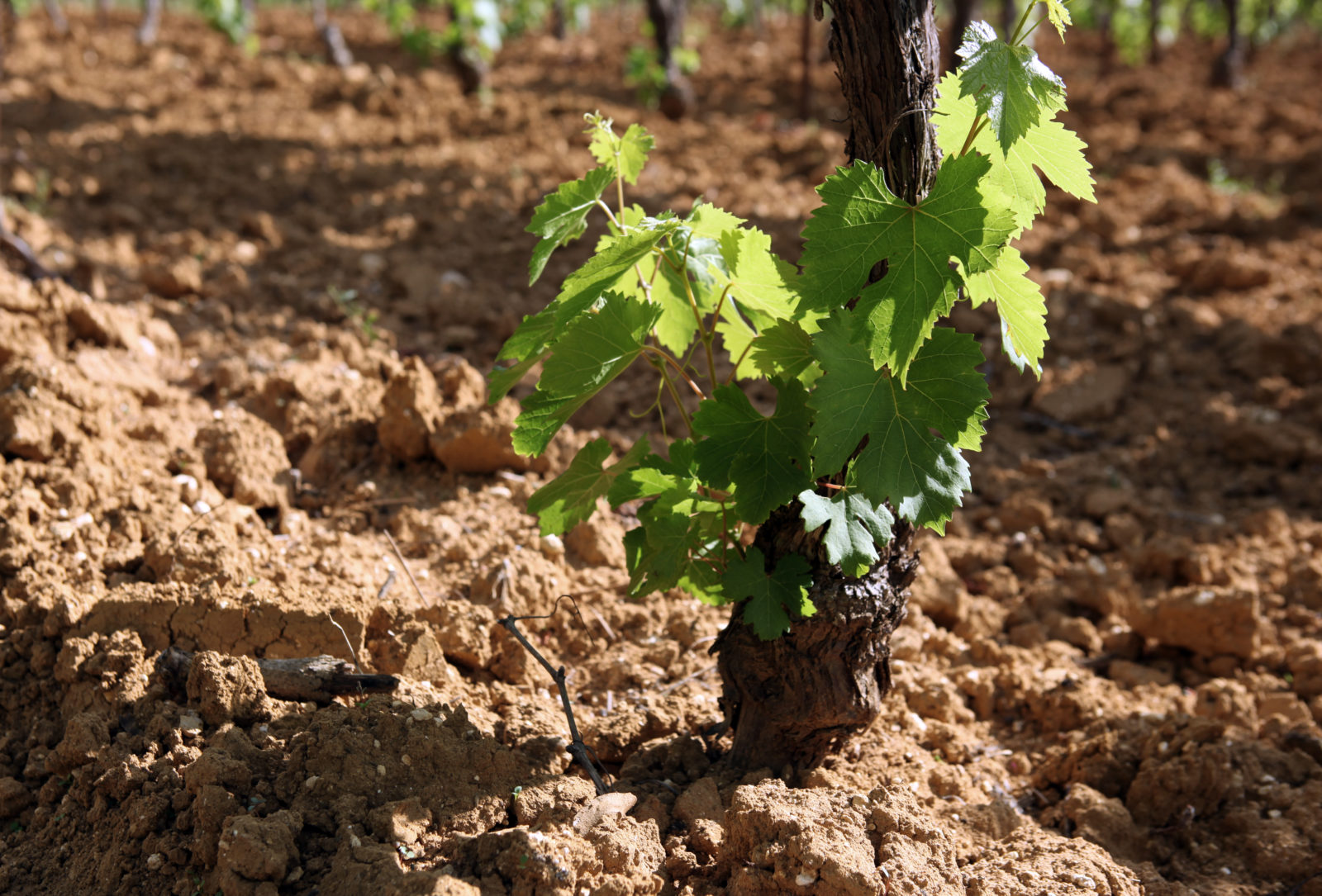
Sandy clay soils
Do certain grape varieties do better on particular soil types?
We now have all our whites on limestone: Viognier, Roussanne and Clairette. On sand we have Cinsault and Grenache for our rosé and to bring a little more elegance to the reds. For clay – what usually is a mix of clay and limestone really – we have most of our Grenache and Syrah. We’ve seen that the grey clay brings a lot of structure in the wines and with a lower pH, while the darker red clays make the most opulent wines.
Which grape varieties do you currently have planted in your vineyards?
Viognier, Roussanne and Clairette for the whites, then we have a vast majority of Grenache and Syrah. Interestingly, we have an unusually high proportion of Syrah for an estate in the South of the Rhône valley and now we have nearly the same amount of Syrah as we have Grenache. We also have a little bit of Cinsault, Carignan, Mourvedre, Marselan and we are interested in Caladoc.
Caladoc? Is that a crossing?
Like Marselan, it’s a crossing. I’m convinced that they are crossings that will have an incredible future and which already have a presence. Many people are growing them but they don’t talk about them. Marselan is a crossing of Cabernet and Grenache while Caladoc is a crossing of Malbec and Grenache.
Why do you have a high proportion of Syrah?
We are in many ways a crossroad between the Northern and Southern Rhône. Being so far south but at a higher elevation with a cooler climate makes us the most suitable AOC in the South to grow varietals from the North. It’s not random that we have the same amount of Syrah as we have of Grenache, which is why we also have Viognier and Roussanne as our main white varieties. We have the climatic and terroir conditions in the Ventoux that are particularly adapted to these grapes.
Is the high proportion of Syrah typical in the Ventoux or something specific about Château Pesquié?
I think we’ve pioneered this, but Fondrèche has about the same amount as we have and we’ve tasted some beautiful Syrah and Viognier from many other estates as well as some very interesting Roussanne, so there is clearly something happening beyond our personal way of thinking about our Ventoux terroir.
Clairette seems to be the white variety of the moment, especially when you talk with other growers in the Southern Rhône valley. Do you see it having a future in the Ventoux or is this an experiment?
We’ve had Clairette for over 30 years and we are very happy with it. Everyone is trying to find ways to have balance and freshness and acidity in their wines and Clairette is one answer to that. We use Clairette in both the Terrasses White and Quintessence White but in small proportion, 15-20%, large enough that it has an impact on the structure of the wine. It is a variety that usually, especially when you pick it at the right pH, will support the balance and freshness of the wine and this is more and more important with climate change.
Apart from the conversion to biodynamic farming, are there any other major changes happening at Château Pesquié?
We have restructured our cellar in a way that allows us to do more and smaller vinifications by plots. We’ve added some smaller tanks which allows us to be more precise in understanding the differences from one plot to another. We are coming into an even deeper understanding of our terroir. My father didn’t have this ability to work as precisely as we can, and it makes a big difference.
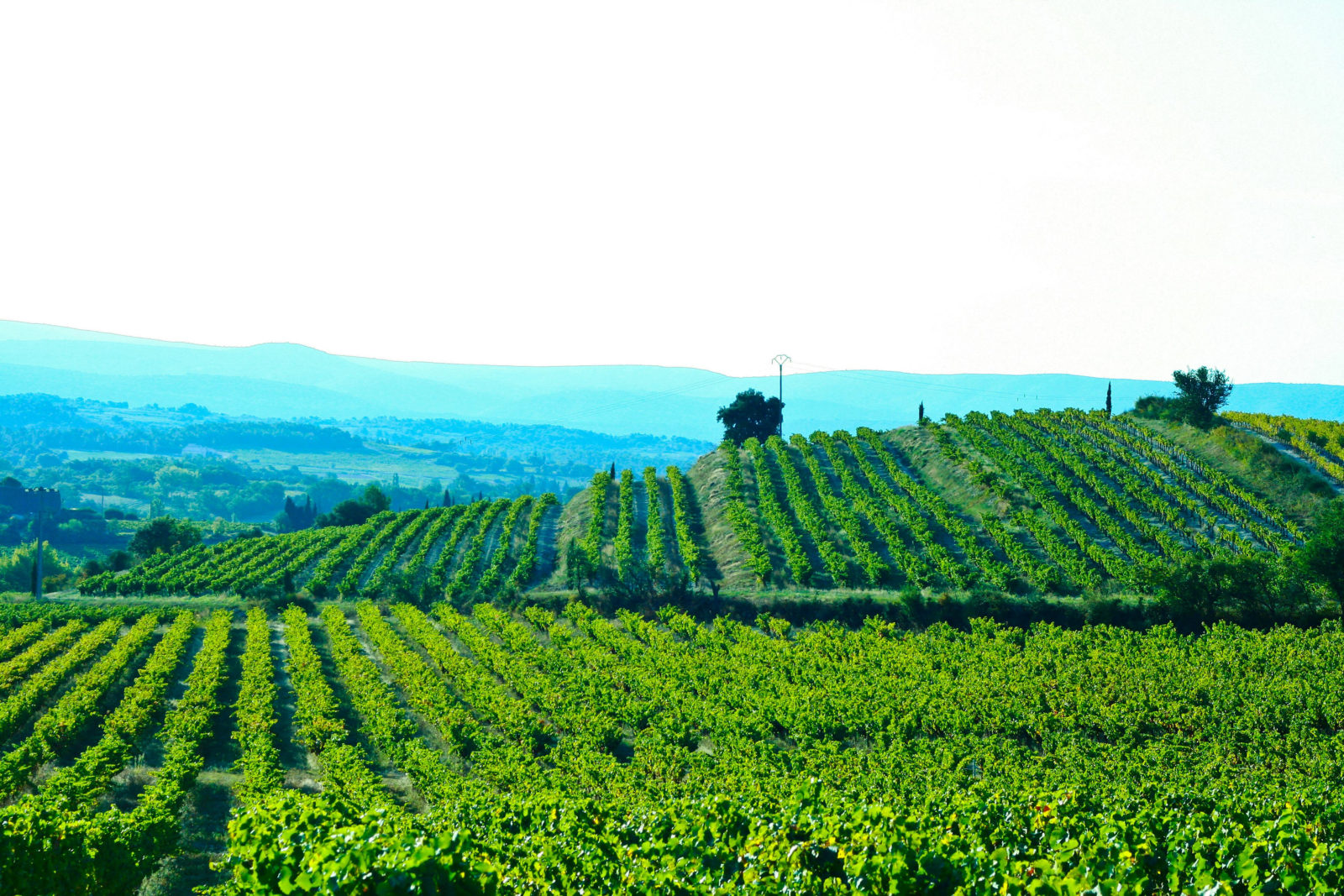
Terrasses of Château Pesquié
How many plots do you currently work?
There’s a little bit more than 100 hectares and depending on how you define plot – it can go from 10 to 200 since “one vineyard” might have different varieties and different soils. One thing I didn’t mention before is that the soil changes very quickly in the Ventoux. In one mile you can have two of three vastly different kinds of soil with one close to another making totally different wine. Not to also mention that the altitudes also change quite quickly in some parts.
I think this is really an interesting point. Whereas the rest of the Southern Rhone can be said to rest on plateaux, benches and ancient flood plains, the Ventoux is a mountain terroir. Having been there a few times and seeing the changes in terroir it is almost reminiscent of Alsace in its complexity.
I think this is a good comparison as there is a complexity to the terroir in the Ventoux that is just now beginning to be understood. We have isolated a few plots where we make Artemia and we’re working on isolating some new ones to possibly create new cuvées, but this is a really long process and we have so much left to understand. It is a mosaic.
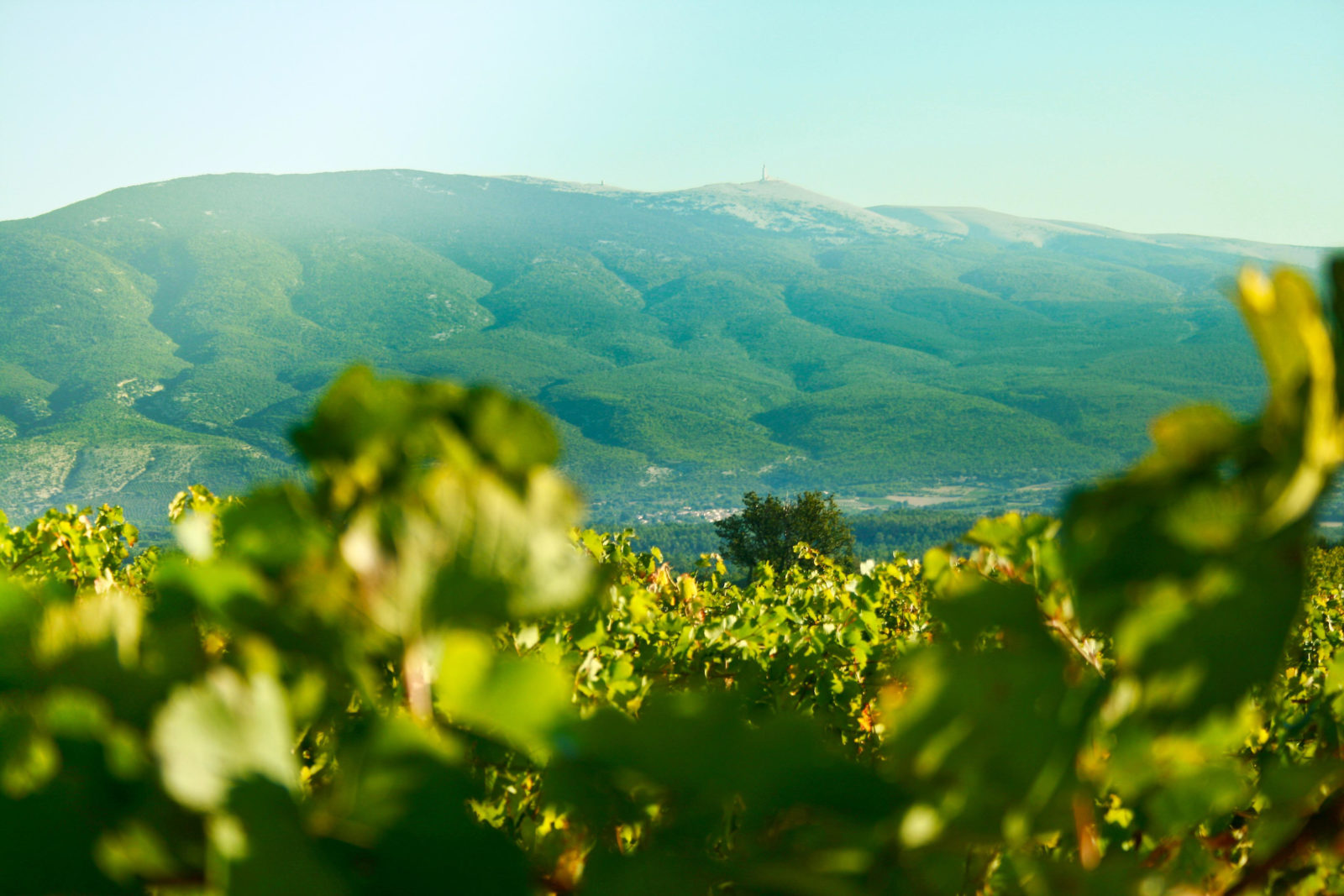
The “shadow” of Mont Ventoux
Essentially this is the closest thing the Rhône has to mountain viticulture?
Yes, definitely. You can find a few comparisons in the highest spots of Gigondas and some Beaumes-de-Venise reds in the Dentelles, but overall for the Southern Rhône, yes.
What are the main differences between being in the “shadow” of Mont Ventoux versus being closer to the Rhône river?
Well, first of all we’re not in the shadow [laughter] It’s funny because when I show my famous 3D map and people see this 2000m high mountain they think that we’re in the shade and that you have no sun. I always say, “Don’t worry, we’re good.”
The vineyards are located between 350 and 500m and the combination of the altitude and the influence of the mountain that makes us who we are. The cool air comes down from the summit of the mountain at night and gets blocked by some small hills that close our valley. They run from north to south between Crillon-le-Brave, which is a small village, through Mormoiron to Méthamis. We are exactly at the same latitude as Châteauneuf but with the impact of the microclimate, we are two weeks later in terms of ripening and maturity. When my father started in the mid 80s we usually harvested between the 20th and 25th of September while in Châteauneuf they would start between the 5th and 10th. Now we start around the 10th while in Châteauneuf the start in late August. So the impact of climate change has helped us to get better physiological balance than we used to 30 or 40 years ago. It has also raised the overall quality of the wines in the Ventoux.
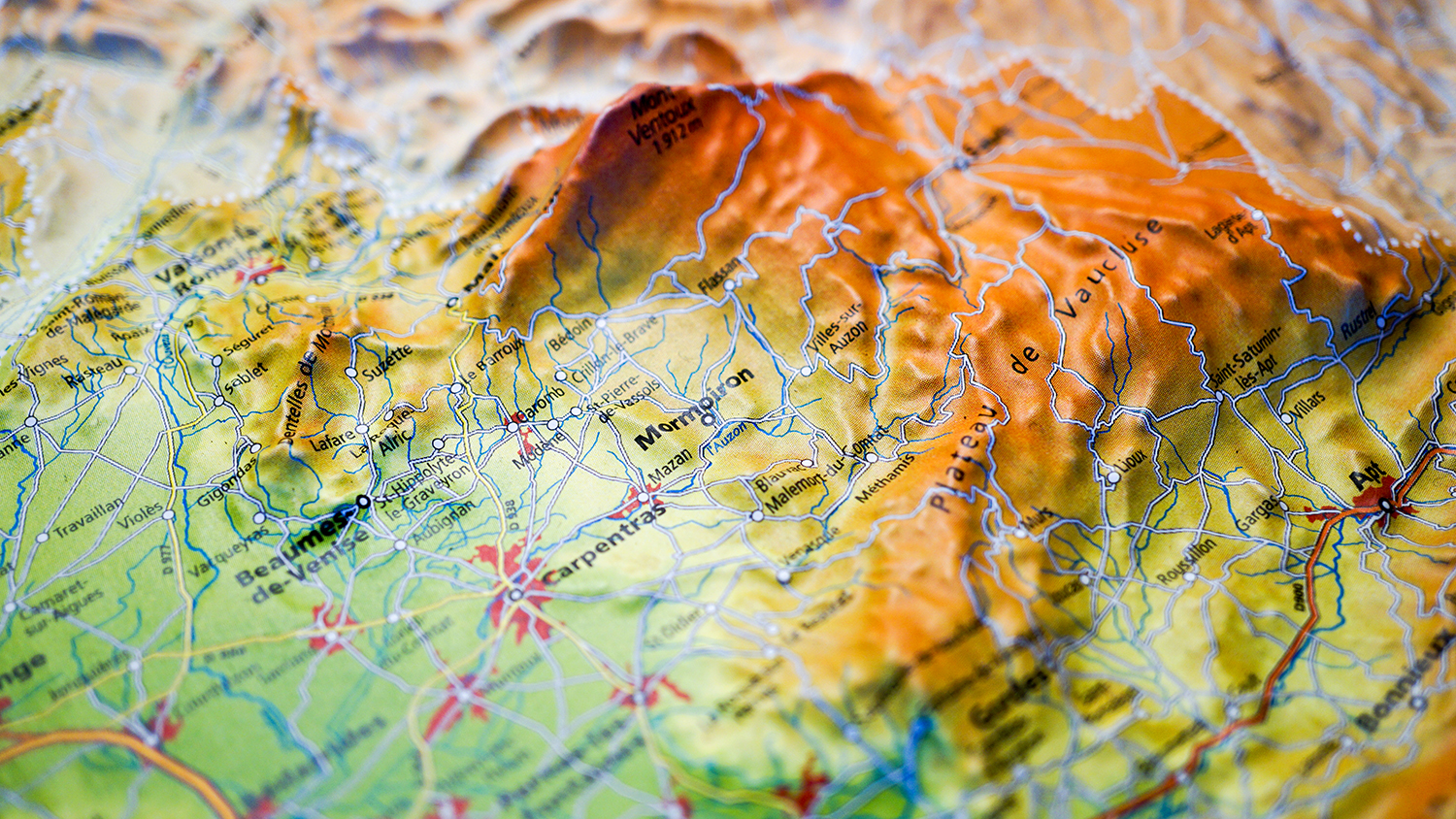
Relief map of the Ventoux
With the overall trend of increasing temperatures, are you concerned about your high proportion of Syrah?
We’re still very confident in Syrah and we still have a higher frequency of good results with Syrah versus Grenache. We’ve started planting a bit more Cinsault and a little bit of Mourvedre so we have a varietal arsenal as well as the ability to plant higher in the Ventoux to fight the climatic changes, but so far climate change has only brought good things to Pesquié. Will it remain so for 30, 50 or 80 years? We have no doubt that the challenges will remain but it gives us time to get ready to face these changes with altitude and varieties. In a way climate change also push us towards organics and biodynamics. We’ve seen the pH drop in the wines and soils with conversion so this is another way to fight it.
Do you destem your fruit?
For the most part we destem our harvest but we’ve been experimenting with more or less full cluster fermentations. So while we are identifying the most interesting plots we are also trying to find the best way to work them. In 2015 we did tests with 0% stems, 20%, 40% and 60% full cluster on the same plot of Syrah and Grenache. When I tasted them blind with my brother a month ago (May 2016) – wines from two different plots, each with 0% through 60% stems and aging in barrels of various ages and cooperages so there were over 30 different samples – the ones we preferred were the 0% or the 60%
I guess that proves you have to commit?
Yes, it showed consistently in both wines. We had in mind that both sides would bring something to the final blend. When we blend 0% and 60% we get something more interesting than if we blend 20% and 40%.
What difference does whole cluster bring to the wine?
It brings out a little more tension and a very noble vegetal dimension. Of course we do not want anything green or acidic. In French we talk about the trame du vin, its texture, and whole clusters has a pleasing effect of this part of the wine.
How has 2016 been so far?
It has definitely been the wettest May in a very, very long time. We had a little bit of frost but nothing too terrible and nothing in comparison to Chablis, Burgundy and the Loire. In a way I’m not that unhappy that we’ve not had a sunny May because we were very early so the slowdown is not that much of a problem. Flowering is starting now, (late May, early June) so we will be happy to see some sun.
Now that 2015 is aging, what is your assessment?
It was a very, very good vintage, we are extremely excited about it. It’s a little early but it is already showing characteristics that remind us a mix between 2007 and 2010. We have great structure with high acidity and a lot of color and concentration. In the first few months the tannins were so smooth that we didn’t feel that the wines needed a lot of aging but now we think they need to be a little more domesticated than we thought, but we’re still extremely excited. For the entire range it is going to be a good vintage.
